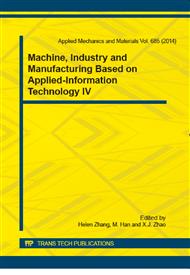p.405
p.413
p.417
p.420
p.424
p.429
p.433
p.439
p.444
DEA's CCR Model for Evaluation of Urban Infrastructure Investment Efficiency of Shaanxi Province
Abstract:
Firstly, this paper uses DEA's CCR model to evaluate the relative efficiency of city infrastructure investment of 10 cities in Shaanxi province during 2008-2013. Then according to the panel data of city infrastructure input and output in 2008-2013, it has carried on the longitudinal comparison to observe the dynamic effect of infrastructure investment efficiency in the time series by using the Malmquist-DEA index method. Results show that the overall city infrastructure investment efficiency of Shaanxi province during the whole is on the rise; while each city development is not balanced, Xi'an development situation is relatively better; although, the Malmquist productivity index of the whole province infrastructure investment is restricted by the technical level, it is still on the rise.
Info:
Periodical:
Pages:
424-428
Citation:
Online since:
October 2014
Authors:
Price:
Сopyright:
© 2014 Trans Tech Publications Ltd. All Rights Reserved
Share:
Citation:


